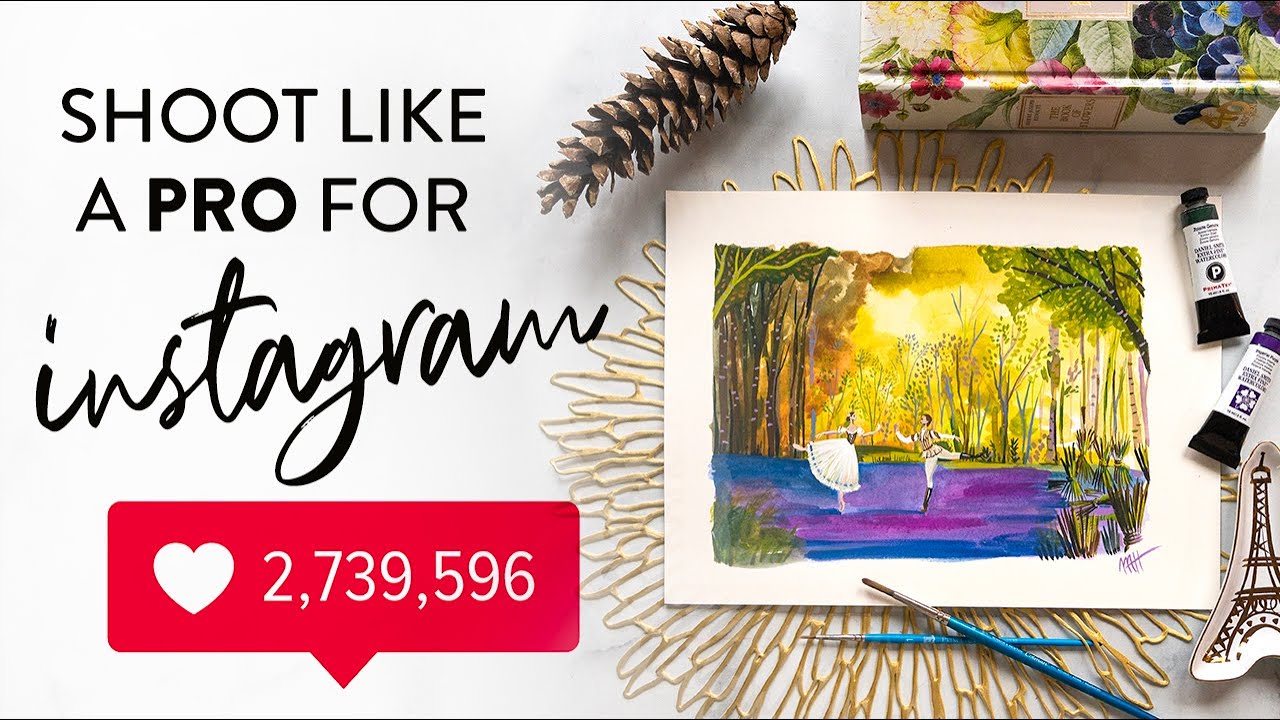How to photograph your artwork for instagram effectively

Understanding the Basics of Artwork Photography
When it comes to displaying your artwork on platforms like Instagram, the first step is understanding the fundamental techniques of photography. The way you capture your work can greatly influence how others perceive it. Here are some basic principles to consider:
- Lighting: Natural light is your best friend. Always aim to take your photos in environments with ample sunlight. This can help to bring out the colors and textures of your pieces.
- Background: Choose a clean, unobtrusive background. A simple backdrop will ensure that the focus remains on your artwork rather than any distracting elements.
- Distance: Maintaining the right distance from your artwork is crucial. Too close, and you may miss out on the overall composition; too far, and the details may become lost.
The Role of Composition in Artwork Photography
Composition refers to how elements within your photograph are arranged. When photographing artworks, following the principles of composition can help highlight your work’s best features. Here’s how to achieve that:
- Rule of Thirds: Imagine dividing your image into thirds, both horizontally and vertically. Placing your artwork along these lines or at their intersections can create a more dynamic photo.
- Leading Lines: Use natural lines within the photo to draw the viewer’s eye towards your artwork. This can include roads, pathways, or even the lines created by framing.
- Framing: Incorporate elements that ‘frame’ your artwork, such as a doorway, window, or shadow, to encapsulate the piece and make it stand out.
Optimal Tools for Capturing Artwork
In order to showcase your artistry effectively, it’s vital to invest in some essential tools for capturing your work. While you can certainly photograph art with a smartphone, using the right equipment can elevate your images significantly. Here’s a look at some of the best tools:
1. Camera
If you are truly serious about capturing your artwork, consider investing in a DSLR or mirrorless camera. Though smartphones have come a long way, dedicated cameras provide improved sensor quality and greater flexibility in settings.
2. Tripod
A tripod is essential for achieving stability and consistency in your shots, especially in low light conditions. This tool minimizes the chances of blurriness and allows for precise framing.
3. Lighting Equipment
If you don’t have access to natural light, consider investing in some softbox or ring lights. These lighting tools can help to create evenly distributed light that enhances the details of your artwork without creating harsh shadows.
Setting the Scene for Your Photography
The environment in which you choose to photograph your art plays a critical role in the final result. Here are some tips to ensure your setup is optimal:
- Location: Opt for a minimalist space that brings attention to your work. A plain wall or a well-lit area that excludes distractions can be perfect.
- Time of Day: The golden hour, which occurs shortly after sunrise or before sunset, provides soft, warm light that can enhance the visual appeal of your pieces.
- Angles: Experiment with various angles to capture the essence of your artwork. Sometimes shooting from below or above can create an intriguing perspective.
Editing Techniques for Instagram-Worthy Images
Once you’ve captured your artwork, the next step is editing. Good editing can help enhance the details without distorting the true essence of your work. Here are some techniques and tools to consider:
1. Basic Adjustments
Utilize apps such as Adobe Lightroom or Snapseed. These tools allow you to make basic adjustments like:
- Correcting exposure and brightness
- Adjusting contrast to enhance depth
- Correcting colors to ensure they are true to life
2. Cropping
Make sure your artwork is the focus of the frame. Cropping unwanted areas can help to create a more polished image.
3. Filters and Effects
While it’s crucial to maintain the integrity of your artwork, applying slight filters or effects can create a signature style that stands out. However, use these sparingly to avoid overshadowing your art.
Capturing Artwork in Different Mediums
The method you choose for photographing your artwork can depend heavily on the medium you are working with. Here are some specific tips tailored for various forms:
Acrylic & Oil Paintings
For paintings, a straight-on view usually works best to capture the true colors and textures. Ensure that shadows are minimal during the shoot.
Drawings & Sketches
When photographing pencil or charcoal drawings, keeping the lighting softer can help to reduce glare and enhance the visibility of fine lines.
3D Works & Sculptures
With three-dimensional pieces, capturing them in various angles helps highlight their depth and texture. Using a rotating display or taking multiple shots can illustrate the artwork’s dimensions effectively.






